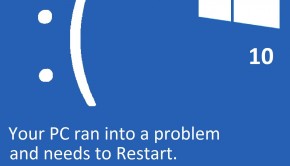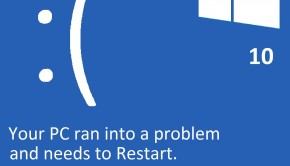Computer Updates Troubleshooting
Reader Question:
“Hi Wally, I am having problems with Computer Updates and wondering how to fix it?“ - Kimberly S., New Zealand
Before addressing any computer issue, I always recommend scanning and repairing any underlying problems affecting your PC health and performance:
- Step 1 : Download PC Repair & Optimizer Tool (WinThruster for Win 10, 8, 7, Vista, XP and 2000 – Microsoft Gold Certified).
- Step 2 : Click “Start Scan” to find Windows registry issues that could be causing PC problems.
- Step 3 : Click “Repair All” to fix all issues.
Setting up weekly (or daily) automatic scans will help prevent system problems and keep your PC running fast and trouble-free.
Wally’s Answer:
Overview of Computer Updates
When people talk about updating their computer, they are usually referring to their operating system. Microsoft currently has three supported operating systems: Windows XP, Windows Vista, and Windows 7. Microsoft releases updates for these operating systems on a regular basis.
These updates often include minor adjustments to the OS to make it run more smoothly. Most users cannot see any difference in performance after one of these computer updates. These updates also can include important hotfixes.
A hotfix is an important update to fix coding errors that can cause the computer to crash. A hotfix can also patch a security vulnerability that hackers can use to install malware like viruses or Trojans on the user’s computer.
Sometimes updating the computer refers to the BIOS. The BIOS is part of the mainboard and controls how all of the hardware communicates and works with each other and the operating system. Updating the BIOS is rarely necessary and normally needs to be done by a trained technician. If the BIOS is not updated correctly, the mainboard can be damaged beyond repair and the computer will not be able to start.
What Problems are Associated with Computer Updates?
A common problem encountered when attempting to update the operating system is, “A problem on your computer is preventing the update from being downloaded or installed.” This is usually a firewall issue. Configuring the firewall to allow the download to complete will correct this situation.
Sometimes this can be due to the computer not being connected to the Internet or an intermittent connection. These are often large files that take a few minutes or longer to download, if the connection to the Internet is interrupted, the download is unable to finish. Loose or damaged Ethernet cables are often responsible for intermittent connections. Sometimes the Internet Service Provider is experiencing a problem and attempting the update at another time will be necessary.
Updating the BIOS can be very difficult and any error will often result in the computer or laptop not being able to start. Often when an error occurs updating the BIOS the mainboard must be replaced. Having a trained technician update the BIOS on a desktop or laptop is often the best choice for most computer users.
I Hope You Liked This Article! If You Need Additional Support on This Issue Then Please Don’t Hesitate To Contact Me On Facebook.
Is Your PC Healthy?
I always recommend to my readers to regularly use a trusted registry cleaner and optimizer such as WinThruster or CCleaner. Many problems that you encounter can be attributed to a corrupt and bloated registry.
Happy Computing! ![]()

Wally's Answer Rating
Summary: Every Windows Wally blog post is evaluated on these three criteria. The average of all three elements determines an "Overall Rating" for each blog post.














